Early spring flowers get a lot of the attention—and sure, crocuses and daffodils are great—but there’s something satisfying about plants that hold off a bit and bloom just when things start to settle in. Late-blooming spring perennials show up right when the early bloomers are fading, keeping the garden interesting without a big gap in color.
These are the quiet overachievers of the spring garden. They don’t rush, and because of that, they tend to stick around a little longer, giving your beds and borders a second wave of energy. If your garden tends to lose steam by mid-spring, these 18 perennials can help carry the season a bit further.
Astilbe

Astilbe thrives in shady corners, adding a pop of color with its graceful, feathery plumes. Its blooms, ranging from pale pink to deep red, dance above fern-like foliage. Ideal for damp locations, astilbe flourishes with consistent moisture. Its charm lies in its ability to lighten up shadowy areas while being relatively low-maintenance. Astilbe’s flowering season extends the garden’s bloom time, just as early spring flowers start to fade. Gardeners cherish it for its airy texture and the soft rustle of its foliage in the breeze. Perfect for borders or as a ground cover in woodland settings.
Peony
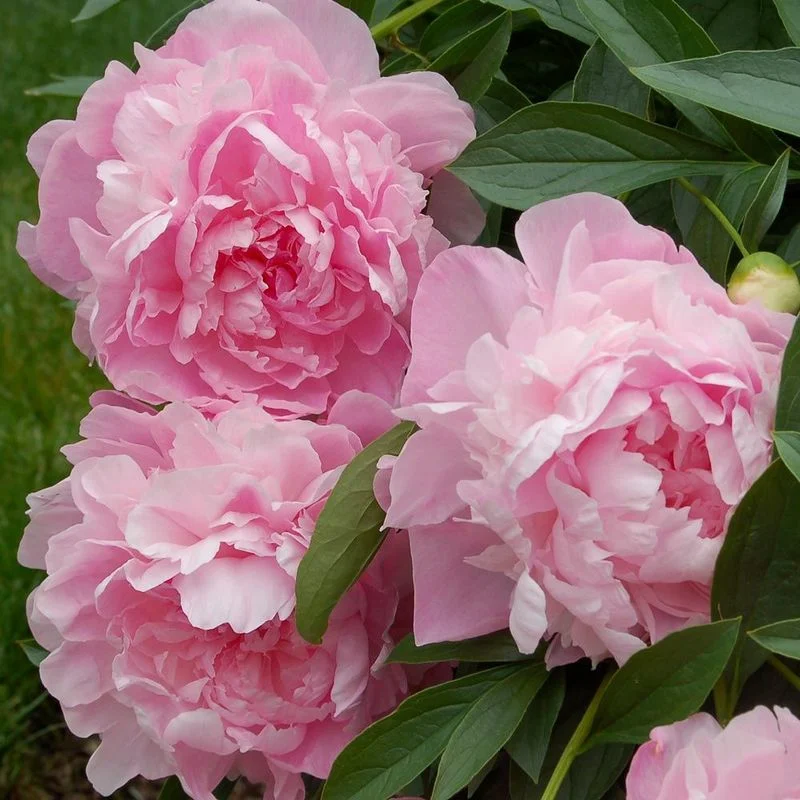
Peonies, with their large and lush blooms, bring a touch of romance to late spring gardens. Their blossoms, reminiscent of old-world elegance, exude a sweet fragrance that captivates the senses. These perennials prefer sunny locations and well-drained soil. Known for their longevity, peonies can thrive for decades with minimal care. As a late bloomer, they fill the gap between spring and summer, providing continuity in garden color. Their showy flowers and lush foliage make them a favorite choice for both formal and informal garden designs, adding charm and sophistication.
Siberian Iris
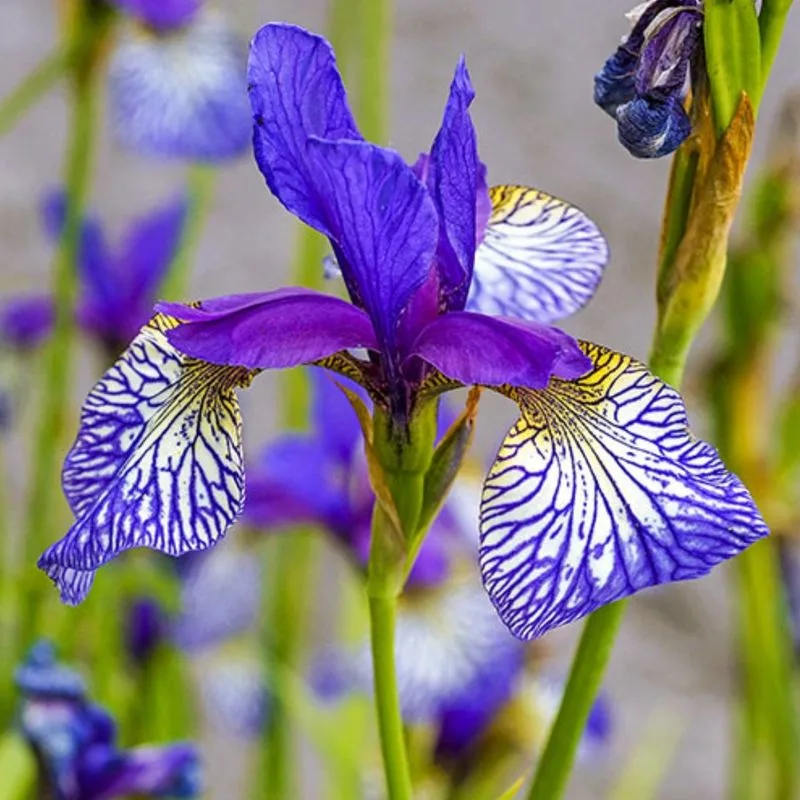
The Siberian iris stands tall with its slender, grass-like foliage and striking purple blooms. This hardy perennial is a garden staple for its elegant form and ease of care. Adaptable to various soil conditions, it thrives best in sunny spots but tolerates partial shade. Its blooms, resembling delicate butterflies, flutter atop sturdy stems, attracting attention. As a late spring bloomer, the Siberian iris extends the flowering season with its vibrant hues. Gardeners appreciate its reliability and the way it complements other perennials, adding vertical interest and a touch of wild beauty.
Allium
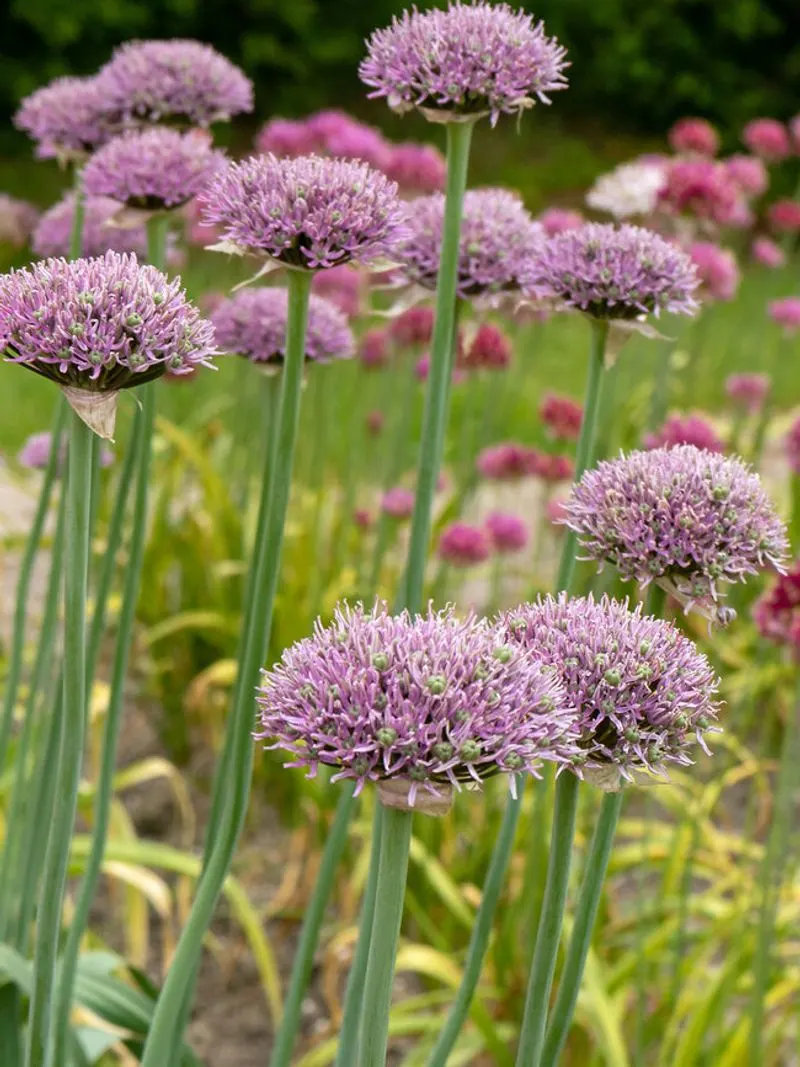
Allium, known for its distinctive spherical flower heads, is a standout in the late spring garden. Towering above other plants, its purple globes create an architectural element that draws the eye. These bulbs are easy to grow, requiring minimal attention once established. Their bold, geometric shapes offer a modern touch to traditional garden designs. Alliums are not only visually striking but also deter pests, making them practical and beautiful. As they bloom, they provide a transition from spring to summer, ensuring continuous interest and color in the garden landscape.
Salvia
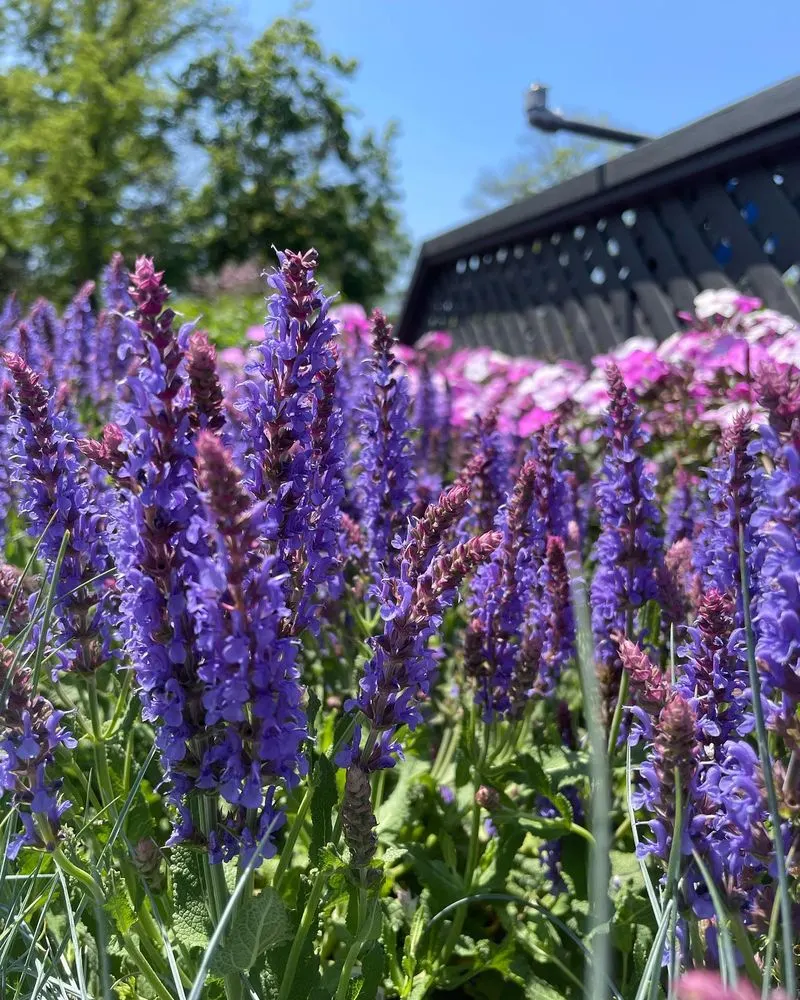
Salvia’s vibrant spikes of blue and purple flowers are a magnet for pollinators. This hardy perennial thrives in sunny locations with well-drained soil. Its long blooming season and aromatic foliage make it a garden favorite. Salvia’s upright growth habit adds structure and height, complementing lower-growing plants. Its resilience to heat and drought makes it suitable for various garden styles. As a late bloomer, salvia bridges the gap between spring and summer, maintaining garden momentum. With its ease of care and lively presence, salvia is a must-have for any perennial garden.
Bleeding Heart
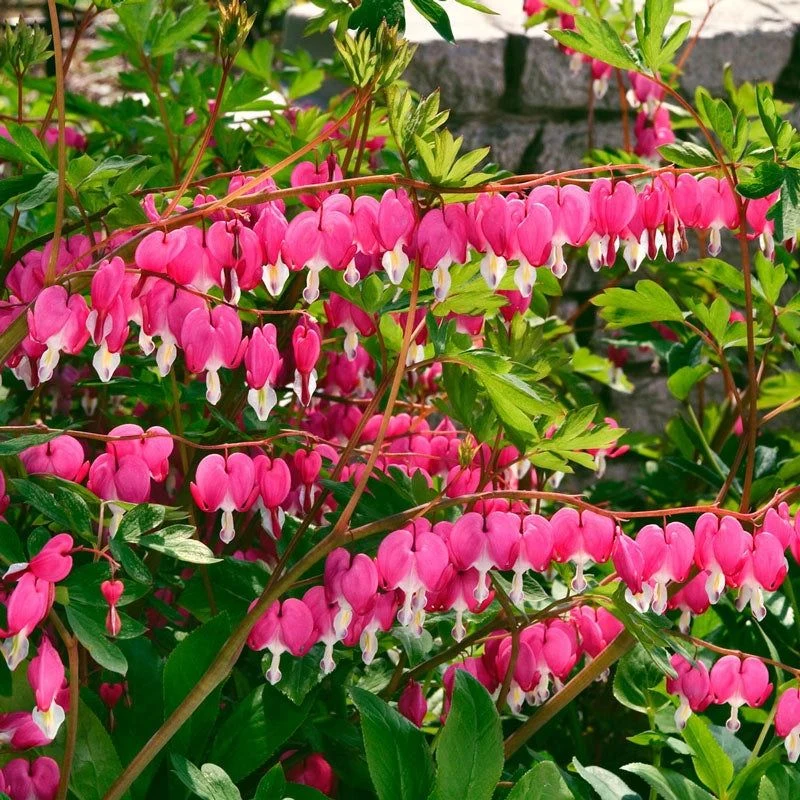
Bleeding heart captivates with its unique heart-shaped flowers that dangle delicately from arching stems. This perennial thrives in shady, moist environments, bringing a touch of whimsy to woodland gardens. Its soft pink blooms appear in late spring, offering a romantic flair just as other spring flowers fade. The bleeding heart’s foliage is equally charming, creating a lush, green backdrop. Despite its delicate appearance, it is relatively easy to grow. Gardeners treasure it for its nostalgic beauty and the way it evokes a sense of enchantment in shaded garden corners.
Coral Bells
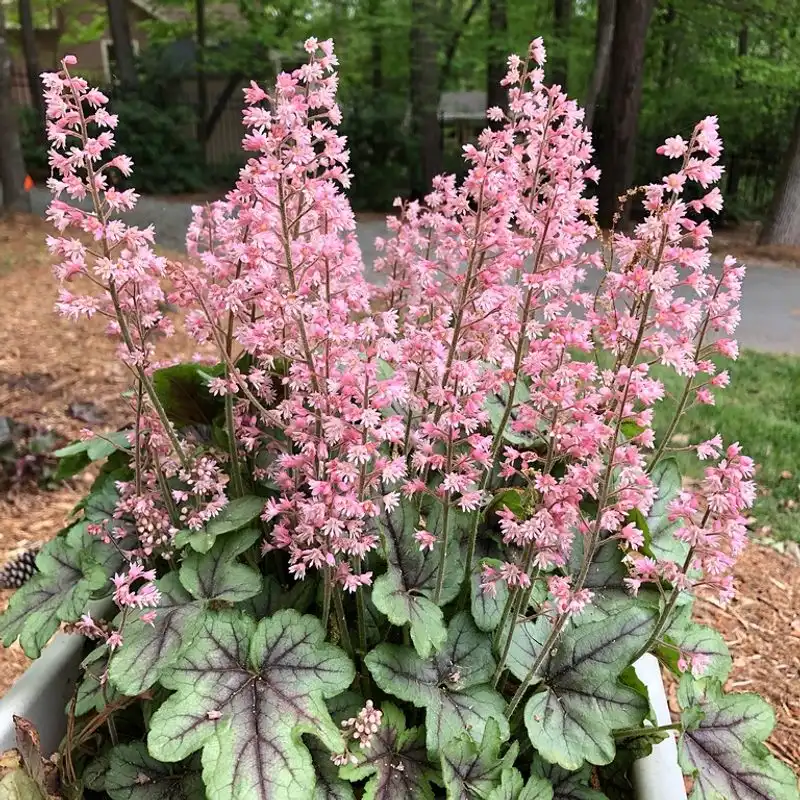
Coral bells are celebrated for their stunning foliage, which comes in an array of colors from deep burgundy to lime green. As a late-blooming perennial, they produce delicate pink or white flowers on slender stalks. These plants thrive in well-drained soil, preferring partial shade to full sun. Their versatility allows them to complement almost any garden style, adding texture and color. Coral bells are perfect for borders or as ground cover, creating visual interest with their varied leaf patterns. Their long-lasting appeal and ease of care make them a gardener’s favorite.
Foxglove

Foxglove, with its tall spires of tubular flowers, adds drama to late spring gardens. Its blossoms, in shades of pink, purple, and white, attract hummingbirds and bees. This biennial or short-lived perennial thrives in full sun to partial shade. Known for its towering height, foxglove complements low-growing companions, creating an eye-catching display. While it requires some care to establish, its striking presence is worth the effort. Foxglove’s romantic silhouette and vibrant colors enliven garden borders, providing a vertical accent that guides the eye upward.
Lupine
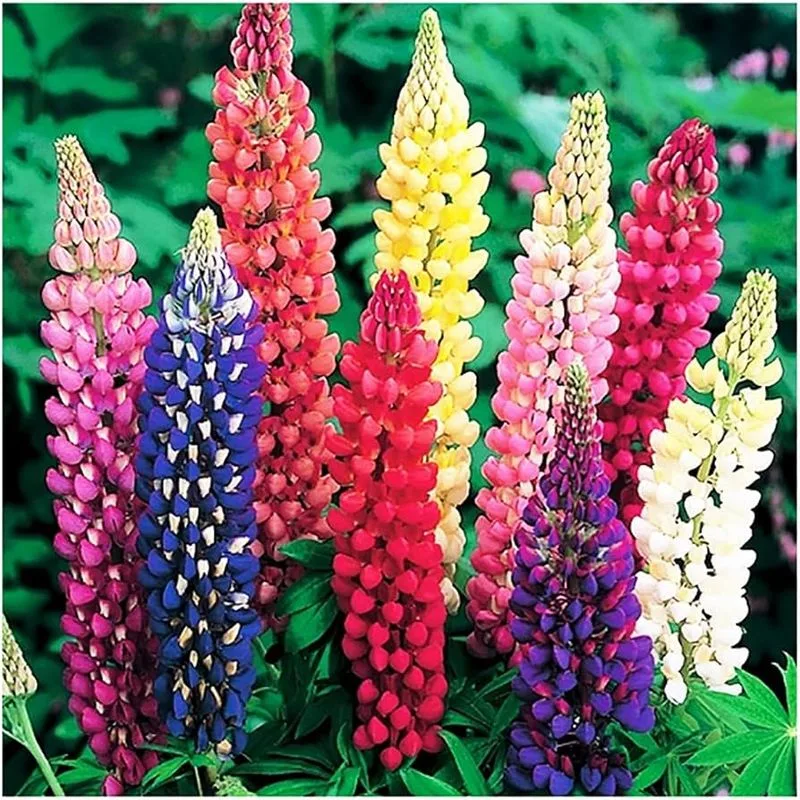
Lupine brings a burst of color with its tall spires of pea-like flowers. This hardy perennial thrives in well-drained, sandy soil and sunny locations. Its vibrant blooms, ranging from blue to pink and purple, make a bold statement in late spring gardens. Lupine’s architectural form and lush foliage provide structure and interest. As a nitrogen-fixing plant, it enriches the soil, benefiting neighboring plants. Gardeners cherish lupine for its resilience and the way it draws pollinators. Its dramatic blooms are perfect for mixed borders or naturalized settings.
Columbine
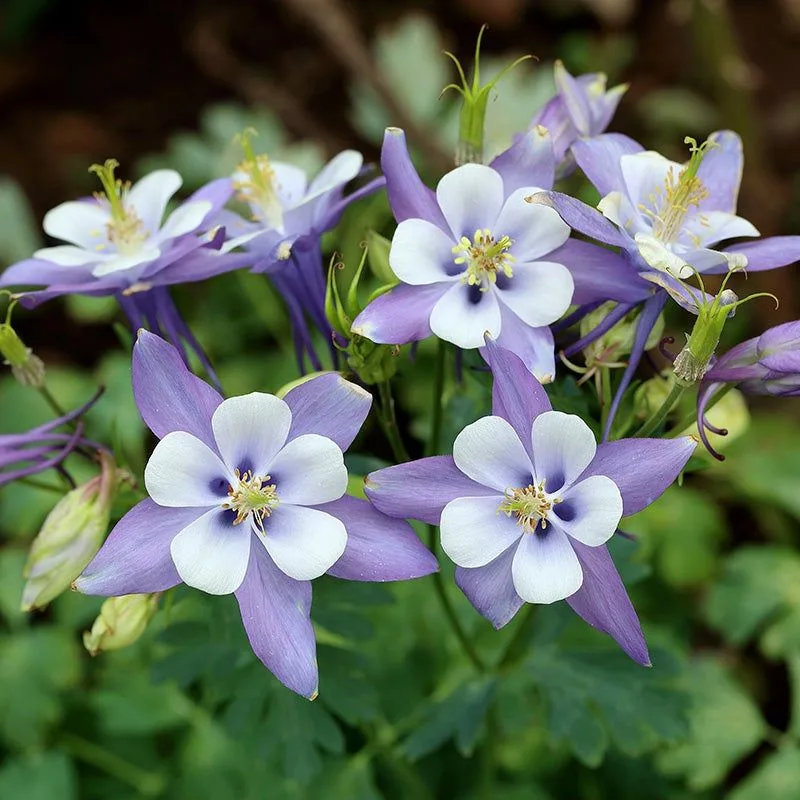
Columbine enchants with its nodding, spurred flowers and delicate, lacy foliage. This perennial thrives in partial shade and well-drained soil, making it ideal for woodland gardens. Its blooms, in a mix of colors including blue, pink, and white, appear in late spring, offering a whimsical touch. Columbine’s unique flower shape attracts hummingbirds and adds visual interest. Gardeners appreciate its adaptability and low maintenance. With its charming appearance and graceful demeanor, columbine complements other shade-loving plants, adding a fairy-tale quality to garden spaces.
Yarrow
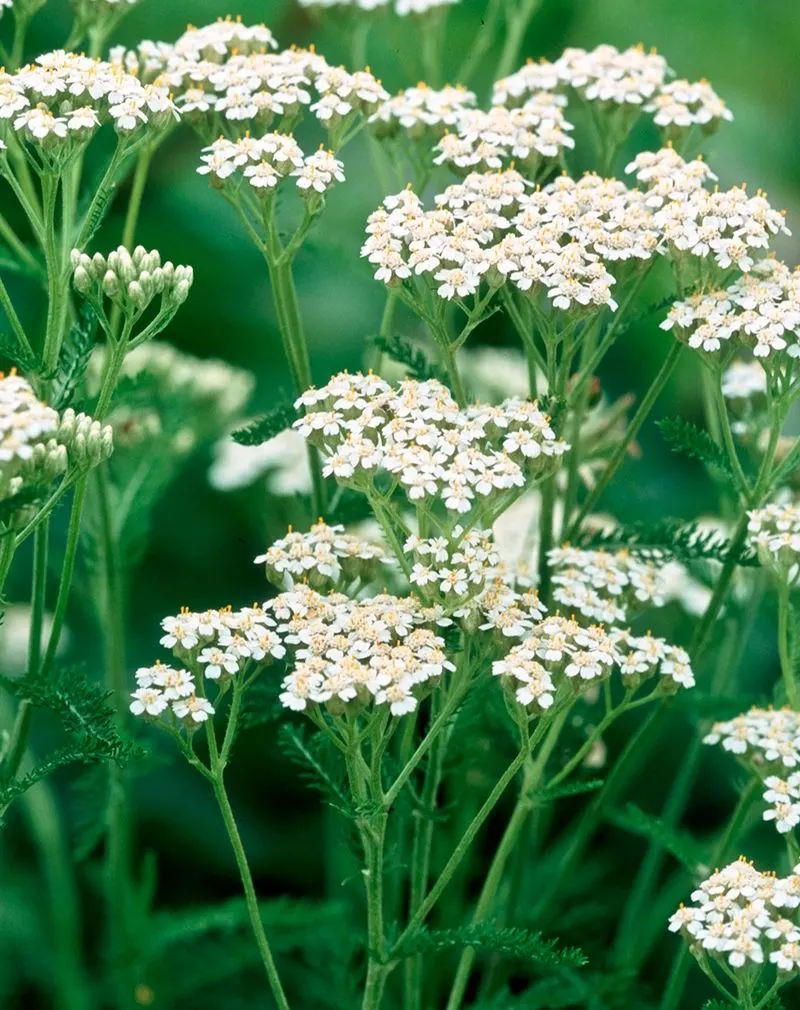
Yarrow, with its flat-topped clusters of flowers, is a resilient and versatile perennial. Its blooms range from white to vibrant yellows and reds, attracting butterflies. Thriving in sunny, well-drained spots, yarrow is drought-tolerant and easy to grow. Its feathery foliage adds a soft texture to garden beds. As a late spring bloomer, yarrow extends the flowering season, providing continuity in garden color. Its medicinal qualities and historical significance add to its appeal. Gardeners value yarrow for its longevity and the way it complements a variety of garden styles.
Geum
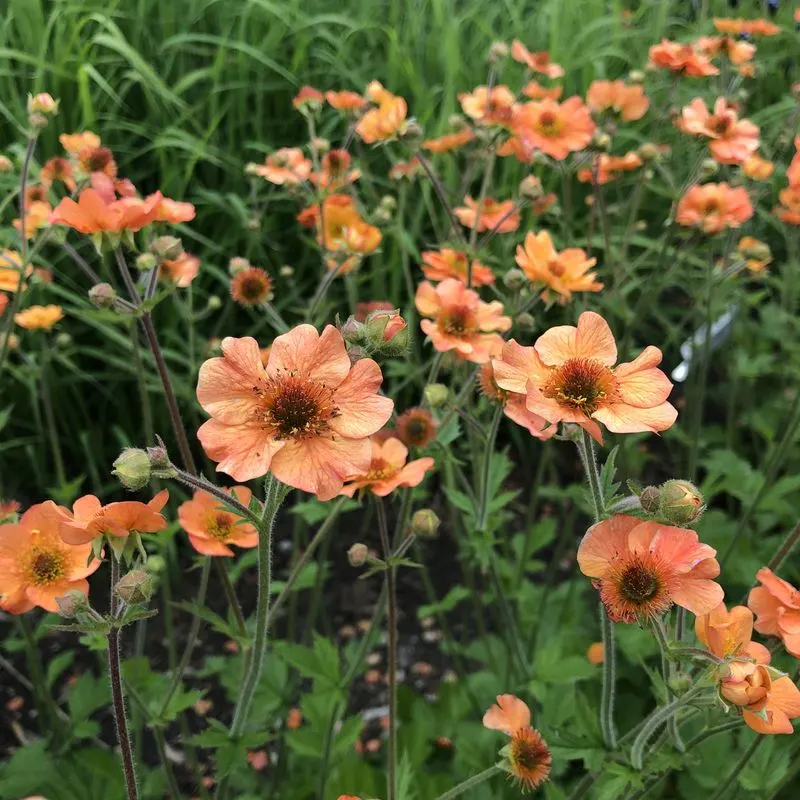
Geum, with its bright and cheerful flowers, lights up late spring gardens. Its blooms, in shades of orange, red, and yellow, stand out against its green, serrated foliage. This hardy perennial thrives in well-drained soil and full sun. Geum’s compact growth habit makes it suitable for borders and rock gardens. Its long blooming period and vibrant colors act as a bridge to summer flowers. Gardeners cherish geum for its ease of care and the way it attracts pollinators. Its fiery blooms and tidy appearance make it a delightful addition to any garden.
Lady’s Mantle
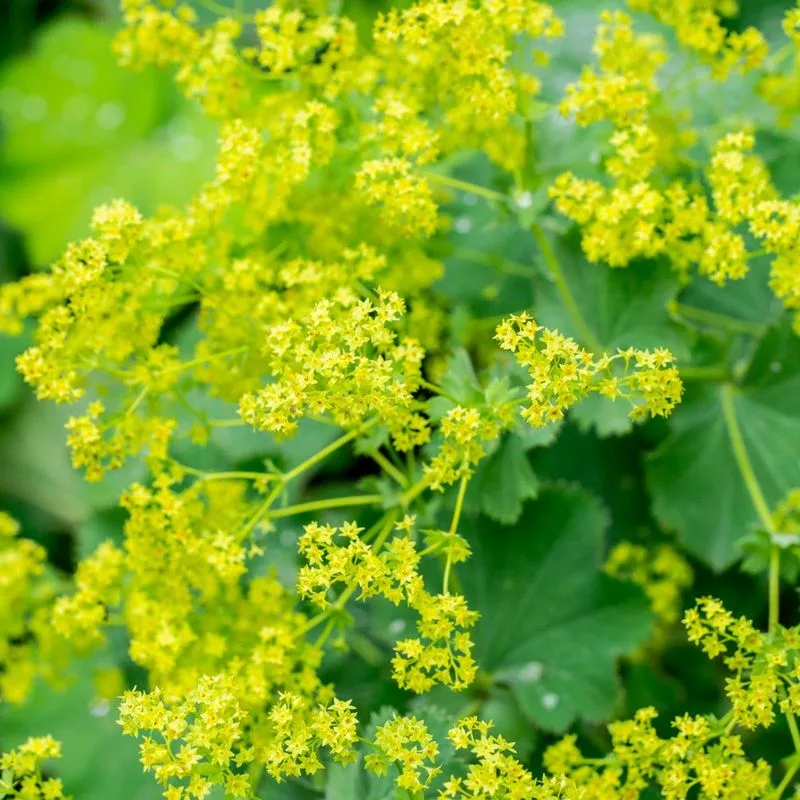
Lady’s mantle, with its soft, scalloped leaves and frothy yellow flowers, adds an old-world charm to gardens. This perennial thrives in partial shade and moist, well-drained soil. Its foliage captures dewdrops, creating a magical morning display. Blooming in late spring, lady’s mantle fills the gap between spring and summer flowers. Its delicate blooms and textured leaves add depth to borders. Gardeners appreciate its versatility, using it as ground cover or in flower arrangements. Lady’s mantle’s subtle beauty and ease of care make it a timeless garden favorite.
Catmint
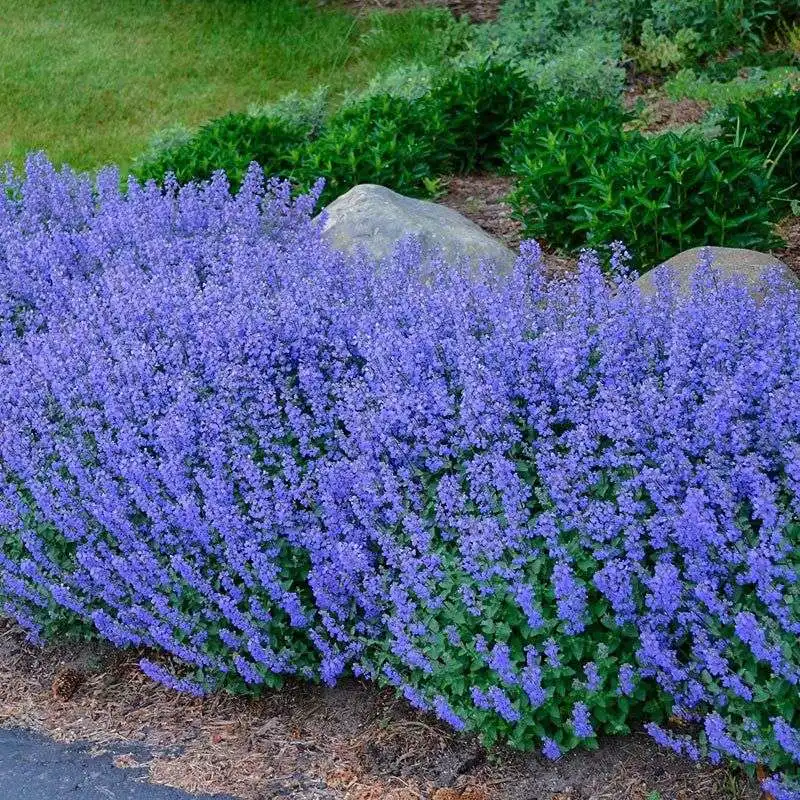
Catmint, with its aromatic foliage and spikes of lavender-blue flowers, is a favorite among gardeners. This perennial thrives in sunny, well-drained areas and is drought-tolerant once established. Its long blooming season and ease of care make it a valuable addition to gardens. Catmint’s soft, billowy form complements roses and other perennials, adding a touch of whimsy. As a late spring bloomer, it continues to provide color and interest as the season progresses. Gardeners love catmint for its resilience and the way it attracts bees and butterflies.
Penstemon
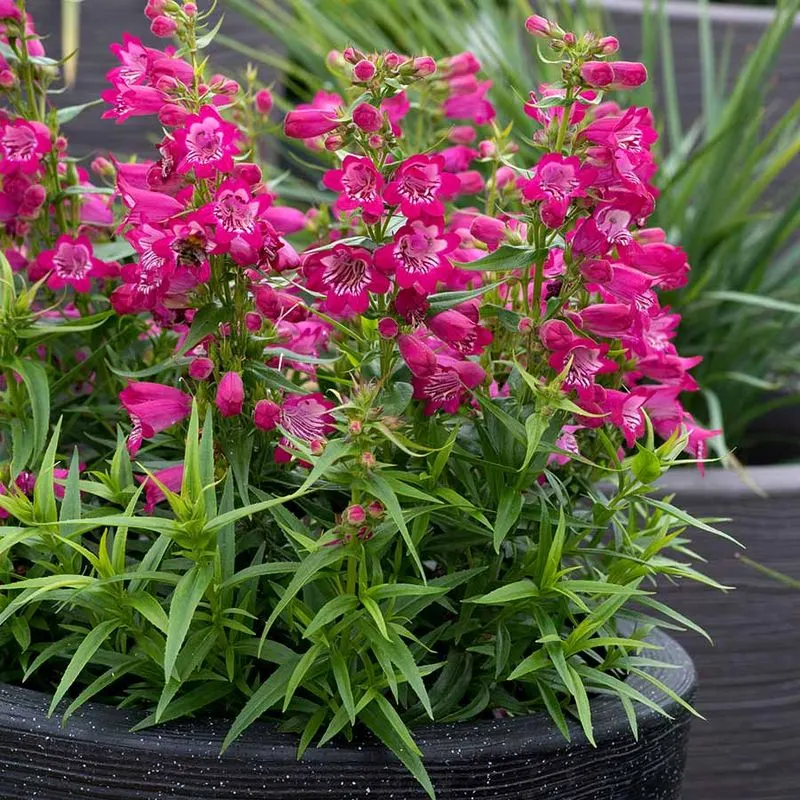
Penstemon, with its striking tubular flowers, brings a vibrant splash to late spring gardens. Its blooms, in shades of red and pink, attract hummingbirds and bees. This perennial thrives in sunny locations with well-drained soil. Penstemon’s upright growth habit and long blooming period make it an excellent choice for borders and mixed beds. Its resilience to heat and drought adds to its appeal. Gardeners value penstemon for its bold presence and the way it bridges the gap between spring and summer, maintaining garden momentum and color.
Campanula
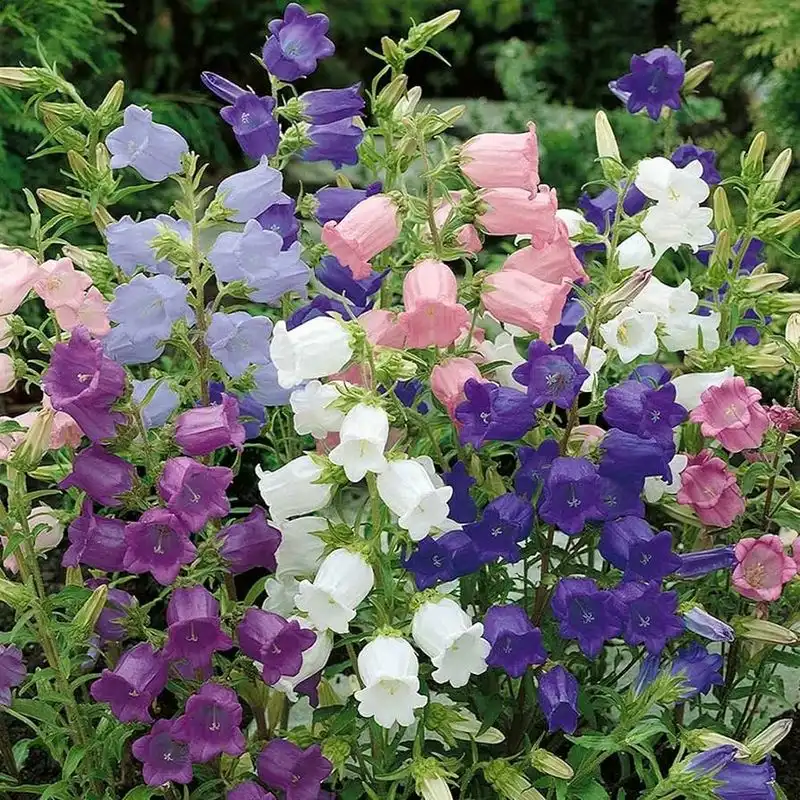
Campanula, known for its charming bell-shaped blooms, graces late spring gardens with a touch of elegance. Its flowers, in shades of blue, purple, and white, cascade over walls and fill borders. This perennial thrives in well-drained soil and sunny to partially shaded spots. Campanula’s lush growth and delicate blooms create a romantic, cottage garden feel. As a late bloomer, it extends the flowering season, ensuring continuous garden color. Gardeners appreciate its versatility and the way it complements other perennials, adding a graceful, trailing element.
Coreopsis
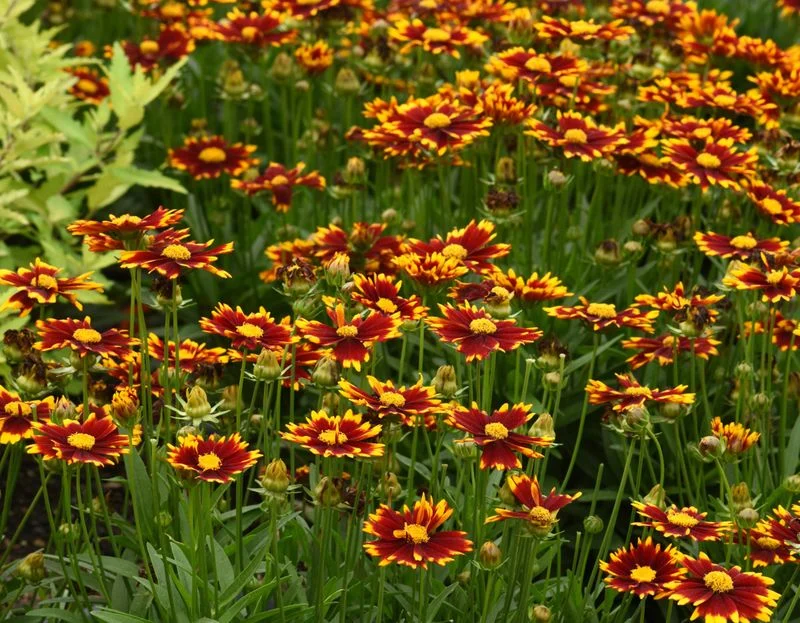
Coreopsis, with its cheerful, daisy-like flowers, brightens gardens with a sunny disposition. This perennial thrives in well-drained soil and full sun, producing an abundance of blooms from late spring onwards. Its vibrant yellow flowers and fine-textured foliage add a splash of color and texture. Coreopsis is easy to grow and low-maintenance, making it a favorite among busy gardeners. Its long blooming season and ability to attract pollinators enhance its charm. Gardeners value coreopsis for its resilience and the way it enlivens borders and container gardens.
Chocolate Cosmos
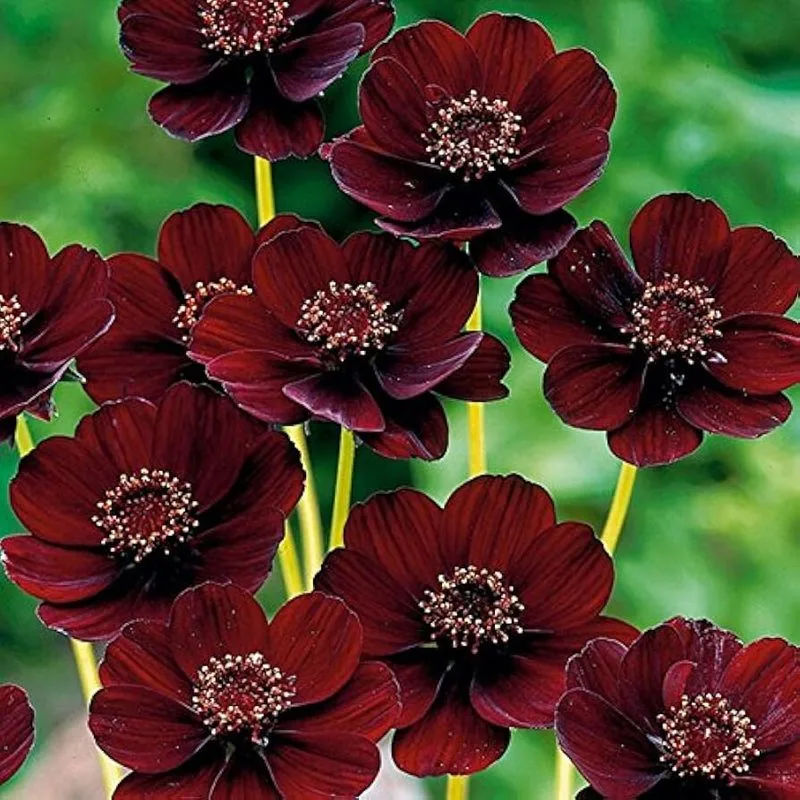
Meet the Chocolate Cosmos, a flower as intriguing as its name suggests. It boasts rich, velvety petals in deep brown with a hint of crimson, reminiscent of decadent chocolate. The scent, a subtle sweet aroma, is a delightful surprise to those who pass by.
In the garden, this beauty thrives in warm sunlight and can captivate any onlooker with its unusual hue. Perfect for borders or containers, it adds a unique touch to garden designs.
Did you know? These flowers are native to Mexico and are nearly extinct in the wild. Plant them for a dash of exotic allure and to support biodiversity.

